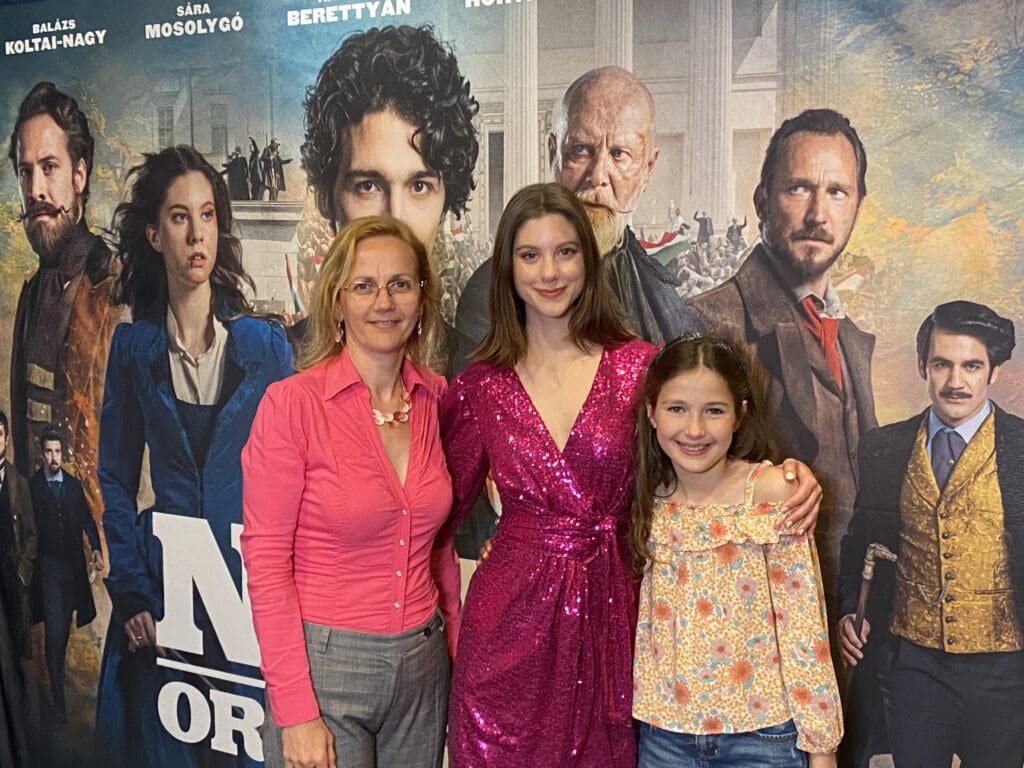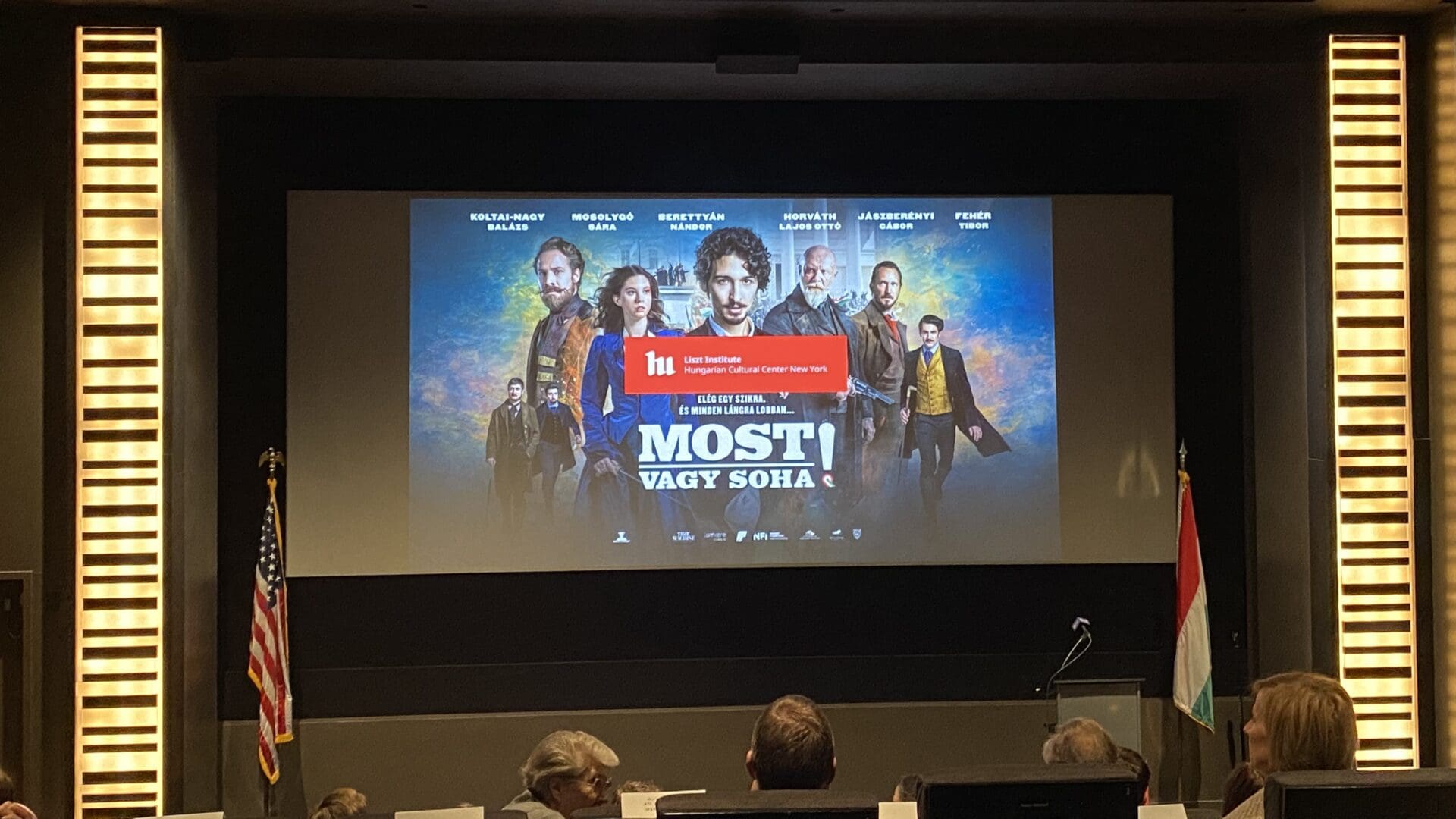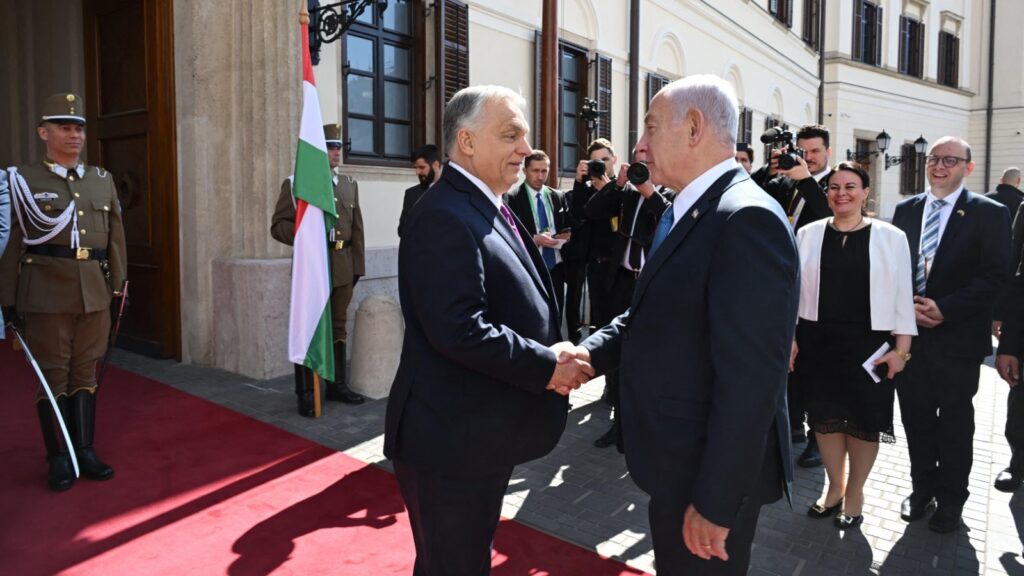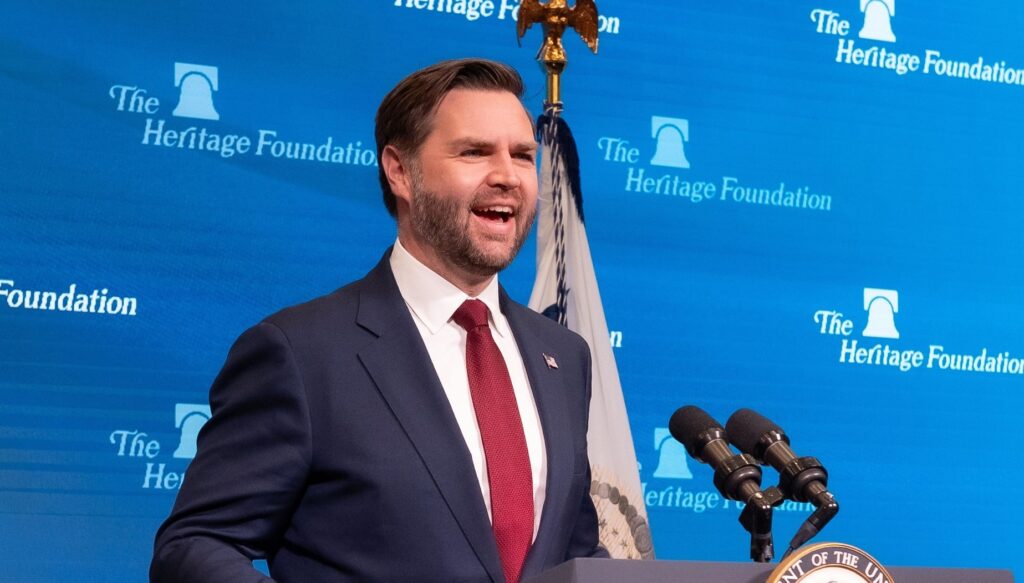When I was handed an English-language poster about the upcoming screening of the Hungarian movie Now or Never! at a Hungarian American event in Los Angeles, I was a bit surprised, because I had not heard of any American screenings at the time. But by the time we flew back home to the East Coast two days later, a personal invitation was waiting for me from the Liszt Institute New York for the event. I was looking forward to watching this historical adventure movie, which had been at the center of the public discourse over the past month in Hungary, with some glorifying, others hammering it, and was glad I could finally form my own opinion and not just base it on conflicting reviews.
As positive as I was about it at the outset, my overall impression was quite mixed.
Based on the screenplay by Márk Kis-Szabó, Philip Rákay and Vajk Szente and directed by Balázs Lóth, the movie is about one of the most well-known days in Hungarian history, the bloodless revolutionary day of 15 March 1848. The day when the poem ‘National Song’, written upon hearing the news of the outbreak of the revolution in Vienna, first set the hearts of a bunch of young radicals (later referred as the ‘March youth’ by historians) on fire, and then those of the people of Pest. This eventful day of history is interspersed with many fictional elements of action in the movie, such as the repeated attempts of the secret agent Farkasch (Ottó Lajos Horváth) to stop the revolutionaries at all costs. He is trying to carry out the orders of the imperial commander-in-chief Von Lederer (Sándor Lukács), embodying the repressive Austrian power trying to prevent the unrest from escalating into a full-fledged revolution. Since poet Sándor Petőfi (Nándor Berettyán) and novelist Mór Jókai (Balázs Koltai-Nagy) slip through his fingers initially, he focuses his efforts on capturing (or even killing) Petőfi’s wife, Júlia Szendrey (Sára Mosolygó). He pays for the help of his former cronies of a street criminal gang (the head of the gang is played by Gábor Jászberényi), until the latter are also caught up in the spirit of the revolution and ultimately take out Farkasch themselves.
Zsuzsa Máthé, director of the Szent István Institute, referring to screening of the movie for high school students by her institute and her recent public conversation with screenwriter Vajk Szente, stated: ‘Even before the screening, one could read a mass of extreme statements for and against the movie, making it practically impossible for anyone to watch a historical adventure film in the cinema without any preconceptions.’
Unfortunately, as much as I tried to forget the tsunami of criticism and the responses to it, which had been politically biased, I didn’t succeed, and I could not see it simply as an action movie. But I’m not sure I should have, since the creators clearly had bigger goals in sight. Producer Philip Rákay himself said that the film’s mission is to ‘orientate, convey a sense of life of the given age, to appeal to young people, to awaken patriotism, to influence people and uplift them’. He added: ‘If I were a historian, I would rather be happy [than critical] that there are finally patriotic filmmakers who create relatable historical themes and characters in this skewed world, based on which many young people will turn to read about Vasvári, Jókai, Petőfi and the others, in search of reality’.

Since my teenage sons were not present and there were no other high schoolers in the New York audience I could have asked (hopefully there will be more screenings in the Tri-state area, even specifically for school audiences, similarly to Hungary), I have no first-hand feedback about the opinion of the target audience. I can only guess: the enthusiasm of the March youth might touch them too, and they might find the characters relatable, even lovable. The fighting scenes, however, might be dubious (also) for them. The greatest virtues of the movie are its authentic scenery and settings: the audience can really feel themselves in 1848, on the muddy, horse manure-covered streets, the chaotic, smelly market of Pest and Buda or in the coffee-scented and smokey Pilvax.
However, sometimes I had the feeling that these fighting scenes bear more resemblance to pubs from Western movies or to 19th century allyes in London
(as depicted by Dickens). In addition, there are way too many fictitious elements added contradicting what’s being taught in schools and held by historians. For example, in the days before March 15, neither demonstrations nor meetings were broken up in Pest; there were no threats of shooting or secret police violence on the day of the revolution; officialization of the Hungarian language had already taken place a few years before the revolution.
It is possible that young people of the 21st century see the March youth like themselves, a group of enthusiastic friends, including a variety of characters: some are hot-headed, some are thoughtful, some are womanizers, while some seek true love, some are loud, while others are quieter. Perhaps even the underlying message may get across: the March youth were able to put aside their individual concerns and personal differences for the sake of a set of noble common goals. Still, we are left wondering as to what extent we can accept that these characters are authentic? The character of Petőfi (who appears as a pale, almost weak and weightless person, especially in contrast to his wife, who comes through as a strong and impactful personality) and his sometimes comically stumbling companions, may serve the purpose of showing how difficult it is for passionate intellectuals to connect with and relate to common people busy with making a living and daily tasks, so perhaps the young audience also realizes how much the success of a mass movement depends on the sonorous, striking slogans of the revolutionary orators (who nowadays are celebrities and influencers). At the same time, no matter how talented the young actors playing the revolutionary characters are, there is little space given to them for showing their actual acting skills. They play one-dimensional roles, focused on one character trait each. They generally don’t offer real drama (except perhaps the Petőfi-Szendrey-Farkasch triple blackmail scene), and we don’t witness real character development either (perhaps with the exception of Jókai, who is initially very timid, but gets more and more self-confident). Thus, we don’t get to know the private Petőfi either which I suspect many high school students would have been interested in.
I agree with those who think that historical authenticity should not be scrutinized in a historical adventure movie, because it should primarily work with exciting characters and a story that simply draws from historical events but does not aspire to document them. I still wonder where the vision of the course of history and its essential moments, mentioned by the producer, are to be found in the movie? After all, even the director, who studied at the New York Film Academy, said in connection with the overseas screening: ‘Our goal was to create a movie for the wider audience, but one that foreigners also understand, because we intended it for them as well.’ However, some more authenticity would have been welcome, for example, showcasing why and how the revolution broke out and how it continued. The two brief closing remarks at the end of the movie about the later life of the two male protagonists simply cannot fill that void. Having said that, I find that the biggest shortcoming of the movie its dramaturgy:
except for the promising, spectacular and humorous first few scenes and a handful of impactful scenes scattered throughout, the story slows down relatively quickly,
becomes weightless and drags on as an average action movie with pretty theatrical and even cliché scenes: lots of marching and fighting; too frequent quotings of Petőfi’s emblematic poem; the soundtrack also reminiscent of Hollywood movies; and an increasingly artificial action-packed, fictitious plot running simultaneously with the historically more authentic series of events.
If I randomly compare this movie to two other recent Hungarian movies, Elk*rtuk and Semmelweis: I have to admit that they were much more exciting and twisty, even though we also knew their outcome in advance. In the former, the action scenes, in the latter, the characters came through as much more convincing. We could have felt more excitement in Now or never!, but for some reason we didn’t. It seems that the extra fictitious plot in itself is not enough to arouse excitement. Just as the performance of talented stage actors alone is not enough for a movie. Ultimately, I came to the conclusion that I don’t regret watching it at all, and I wouldn’t talk anyone out of it. In fact, I specifically recommend that you ‘see it for yourself’, but I am increasingly convinced that the story of 15 March 1848 would also have been much more impactful (and obviously much more cost-effective) if it was created as another piece of Vajk Szente’s large-scale, dynamic historical musical series. It may have not been played for decades, just only for years, but I wonder if this movie will last longer than that.








